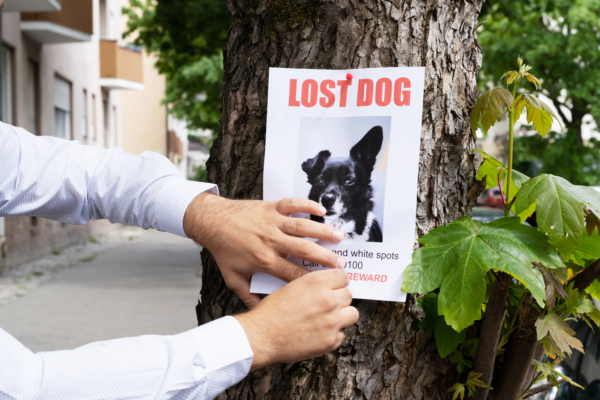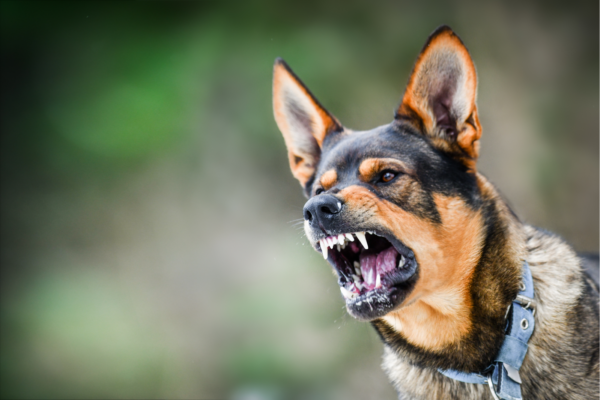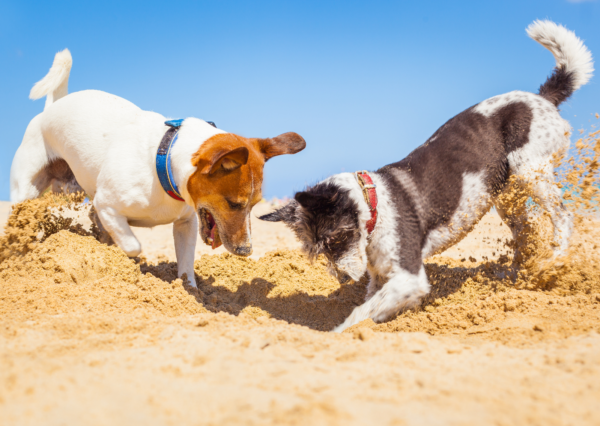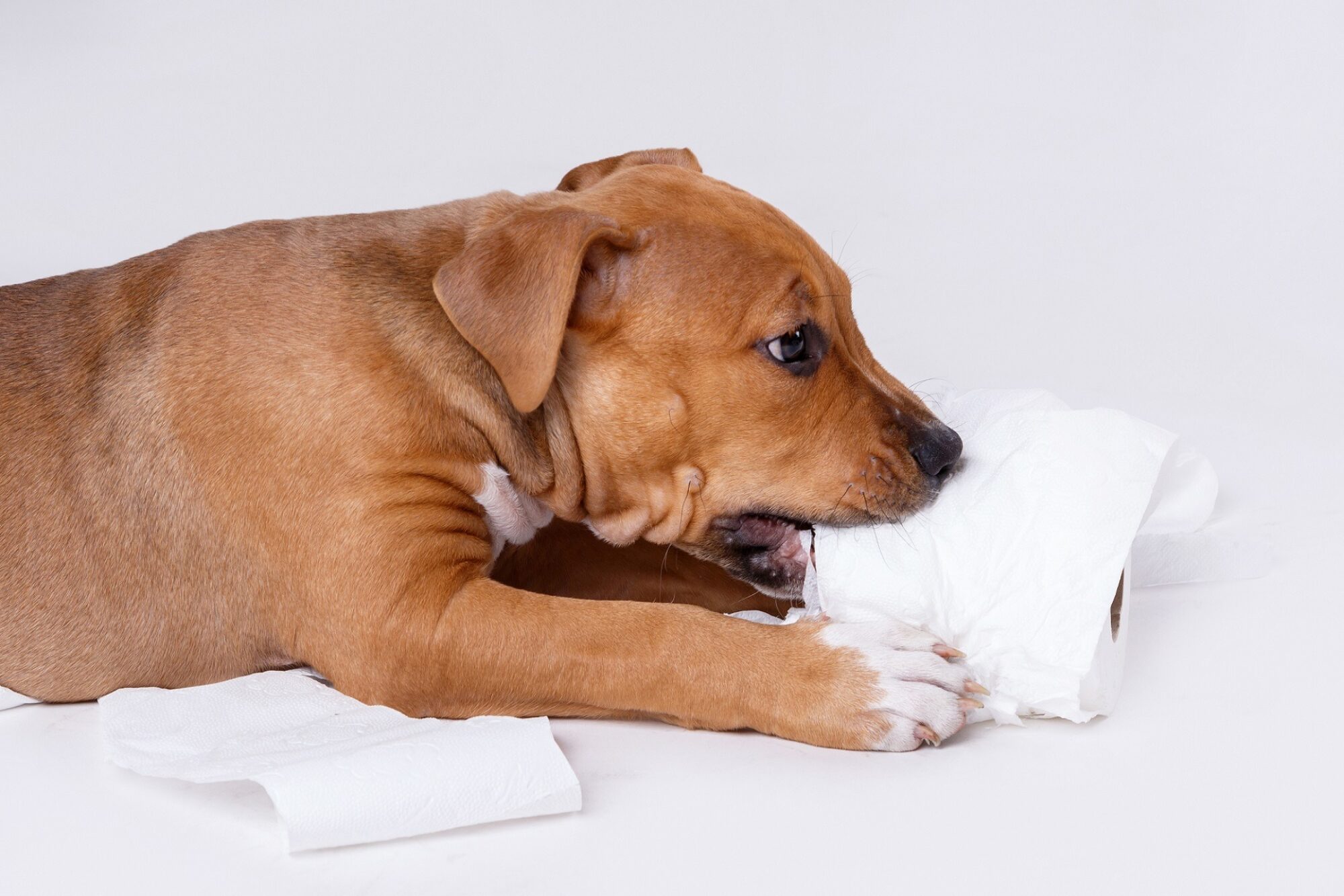How to Deal With an Aggressive Puppy?
Identifying aggression from mouthing or play is not always easy for a puppy owner. Whilst it is unusual to see aggression in very young puppies, it is not impossible. Lack of appropriate socialisation, poor genetics, absence of siblings, isolation can contribute so undesirable interactions with other dogs and humans. So how to deal with an aggressive puppy? You’ll find out the answer in this article
Types of dog’s Aggression
- Guarding food or possessions – this is normal behaviour for dogs, so teaching them that this is unnecessary is an essential part of a young puppy’s education
- Interactions with other puppies or adult dogs – this is usually due to fear and based on previous learning. The aggression is a defence mechanism to keep themselves safe. Growling, snapping, raised hackles are behaviours to communicate that the other dogs should move away. If their actions are successful, then there is a high chance that the same tactics will be repeated the next time they meet a dog.
- Over handling – many puppies are over-handled and cuddled and use the growling and snapping behaviours to try to get the human to stop touching them and to move away. These actions are based on initial lack of handling training and previous experiences. If the human stops the handling, then the growling and snapping have achieved their aim and are more likely to be repeated in the future.
Aggressive puppy – the process: Diagnosis – Management – Action – Help
Aggression, Mouthing or Play?
What looks like aggression may be something else. Diagnosing correctly will affect the action plans.
1. Diagnosis aggression behaviour of puppy
What does Mouthing Look Like?
Puppy biting or mouthing is a fundamental part of learning. It’s how puppies learn about their world and how to interact with their siblings and their human family.
This can be sudden, painful and persistent and is often accompanied by over excitement. Grabbing clothes hands and feet are symptomatic as are specific time of day.
Aggressive puppy. What Does Play Look Like?
Over enthusiastic play, with noisy, growls & bites can all be part of play. Play should be well balanced with the puppies taking it in turns to chase or be on top. Different breeds have different play styles; for instance, terriers are fond of leg biting whilst other breeds prefer to play chase.
What does over handling look like?
How to stop puppy aggression? Learning to read your dog’s body language takes practice; however, there will be some obvious signs. Wriggling, licking lips, growling, snapping, biting hands are all symptomatic. A simple test you can use is to touch your puppy for 5 seconds then stop. If your puppy nudges you for more attention, then he is probably enjoying what you are doing. If he doesn’t re-engage then he would probably prefer you not to touch him in that way.
2. Management = Effective training
Aggressive puppy training. Using management will assist you in coping with the issues whilst training is undertaken.
Mouthing – the best course of action is to re-direct this on to a suitable chew toy. Have plenty of suitable items to hand including one in a pocket so the redirection can be actioned quickly.
Play – interrupt play if excitement levels are getting too high. Practice recalling your puppy away from their playmate. Keep sessions short particularly with unfamiliar dogs. Keep on lead interactions to 5 seconds.
How to deal with aggressive puppy?
Allow the puppy to finish his meal then encourage him away with some treats to allow you to remove the bowl safely. For a aggressive puppy who is showing aggression towards other dogs, walk him on a lead in quiet areas whilst you are working with a trainer. In many places, street walking is a good plan as you rarely see other off-lead dogs. Supermarket car parks are another option where other dogs are not seen often.
Take tasty treats with you when walking. If you come across another dog, give the cue ‘this way’ and use the food to lure him to walk in the opposite direction. If you see another dog off-lead coming towards you, tossing some tasty treats his way can buy you a few minutes to turn and walk away. Remember, you need to take action before your dog reacts.
Overhandling can cause numerous issues from putting on a harness or lead to grooming or health checking. Food is the best for of management in these situations. Lickimats or Kongs can be used to dispense wet foods. Keeping the family safe – It is essential that puppies are not bothered by young children whilst they are eating at any time. This should remain a golden rule. Children should always be actively (rather than passively) supervised when in the company of a dog. Similar rules should apply with any child-dog interactions. Supervision at all times. This should be active rather than passive. Use puppy pens to assist with this. Discourage cuddling and over handling.
3. Action – aggressive puppy training
Mouthing – teach the puppies to swap and exchange toys. Placing treats or interesting toys on the floor and point to them teaches appropriate behaviour around hands. Teach puppies that a flat hand is the cue to take a treat whereas hands holding things including treats.
Play – this needs to be handled carefully and with expertise. Keep any interactions short and with known dogs. Seek assistance as soon as possible. If your puppy is under 16 weeks old, then timing is crucial.
Over-handling – this will require desensitisation to touching and will require the assistance of a professional trainer.
Aggression with other dogs and puppies – addressing this aspect will require the assistance of a professional trainer or behaviourist. Continue with the management above whilst working on this.
4. If you can’t handle your puppy aggression, get help from a professional dog trainer
If you have concerns about your puppy, then seek help as soon as possible. Avoid waiting ‘to see if it goes away’. Delaying could worsen the behaviour and take more time to resolve. Suitable organisations that have accredited professionals vary from country to country. In the UK look for professionals accredited with Association of Pet DogTrainers (UK) (https://www.apdt.co.uk/), Association of Pet Behaviour Counsellors (https://www.apbc.org.uk/). Worldwide, Certified Training Professionals from the Karen Pryor Academy (https://www.karenpryoracademy.com/) or International Association of Animal Behavior Consultants (https://m.iaabc.org/)
5. Start training with your puppy now, get help from a professional dog trainer!
Does your dog growl, bark, lunge or show fear when seeing other dogs and people on walks and at home? Do you struggle to keep your dog calm and relaxed when out and about? Here you will find the solution! [click here to get help] Having a reactive dog can be hard and lonely. But we are in this together!
See also other posts:
June 30, 2023

Get Your Lost Dog Back Home Quickly: Follow These 12 Tips for Success
Vacations favor more frequent and longer walks with our furry friends. We travel, visit new places. Summer makes us loosen our brakes and allow our…
June 30, 2023

Managing Aggressive Dog Behavior: Tips for Peaceful Living
Living with an aggressive dog may seem challenging, but it can be peaceful and manageable with the right approach. One key aspect is to remain…
June 30, 2023

Unlocking the Secret to Successful Puppy Socialization: Quality over Quantity
Today, although the topic is very important, I will keep it brief. Socialization is a topic that could fill books or scientific papers. However, today…

![Mastering Errorless Animal Training! [Webinar] 2023-08-05 17:00:00](https://tromplo.it360.site/app/uploads/2023/07/AdobeStock_612656618-160x0-c-default.jpeg)

